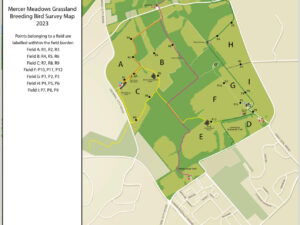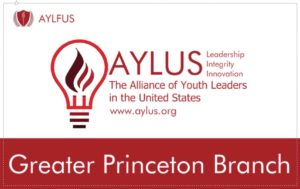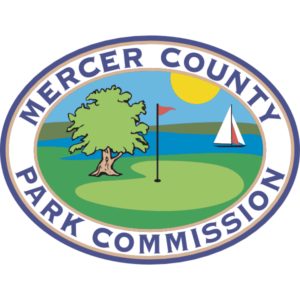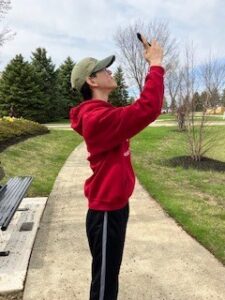Since May 2023, the Greater Princeton & Far Beyond Branch of AYLUS (GPA) Light as a Feather Committee has been supporting the Mercer County Park Grassland Bird Nest Survey, Washington Crossing Audubon and Princeton University Green Hall Bird Room, and Bird Banding Stations of the American Eastern Bird Banding Association.
The Mercer County Park Commission is asking for the public’s help in assessing its efforts to create one of the largest contiguous grassland habitats in the region at Mercer Meadows.
In 2012, a 435-acre habitat restoration project began to improve the Mercer Meadows grasslands for native wildlife by planting native grasses and wildflowers.
As most species of grassland bird populations are in decline, transforming Mercer Meadows into a large grassland habitat was essential to the area’s grassland breeding bird population and biodiversity. Breeding pairs of bobolinks, grasshopper sparrows, Eastern meadowlarks and American kestrels have since made Mercer Meadows their breeding grounds.
To evaluate the success of the project and influence future stewardship of Mercer Meadows, an annual Grassland Bird Survey is vital, county officials said. Volunteers are needed for this survey.
Washington Crossing Audubon Society is a non-profit organization dedicated to the enjoyment and protection of birds, wildlife, and the environment through education, research, and conservation. Washington Crossing Audubon supports several active research projects, including funding two bird monitoring sites here in central New Jersey and in the Central American country of Costa Rica.
Washington Crossing Audubon Society organized such weekly activities, which are weather permitted, from May to November, supervised by Hannah Suthers. This project restores grassland bird breeding habitat at the Cider Mill Grassland Preserve by overseeing native, warm-season grasses.
American Eastern Bird Banding Association-Why Band Birds and How to Get Involved
Data from bird banding are useful for many aspects of avian management and conservation. Here is a partial list of some of the information gathered by marking individual birds.
Dispersal and Migration
When banded birds are found away from where they were banded we can reconstruct the movements of individual birds and learn their migratory routes or nesting or breeding grounds.
Behavior and Social Structure
A color banded bird can be recognized without capturing the bird again. This can allow study of such things as mate fidelity, which bird in a pair builds a nest and feeds the young and other social behaviors.
Determining Life Span
Marking an individual bird allows researchers to know the length of time a bird can live. It turns out that many species of wild birds can live 10 to 20 years (though these are exceptional individuals, not the average).
Populations, Survival and Productivity
Mark-recapture techniques allow researchers to estimate the total number of birds in a population. Constant effort banding stations provide estimates of where the limiting factor is in a species life cycle.
Game Bird Data
Hunting regulations are informed by data from prior years’ hunts. Banding data helps assess how various age and sex classes are reacting to hunting pressure.
GETTING INVOLVED
If all this sounds like something you’d like to get involved in, you’ll first need to find a nearby banding station. You can consult the following list: https://birdnet.org/info-for-ornithologists/observatories/or do an internet search on “bird banding” and your state. Being trained as a bander or banding assistant is a long process that can take years, depending on the level of independence you’re seeking. A trainee more or less becomes an apprentice to the bander and over many visits learns how to record data and handle birds before then moving on to extracting birds from nets and/or traps, applying the bands and determining age and sex of the birds.
It is important to realize that not everyone has the necessary skills, dexterity and the good eyesight needed to become a bander. These people can help out at a station in other capacities such as being a scribe, an extractor of birds from the nets or by helping to carry the birds back to the station from the nets.
AYLUS Light as a Feather Committee’s Activities (May 2023-Feb 2024)
1. GBBS for Mercer Meadows 2023
As most species of grassland bird populations are in decline, transforming Mercer Meadows into a large grassland habitat was essential to the area’s grassland breeding bird population and biodiversity. Breeding pairs of bobolinks, grasshopper sparrows, Eastern meadowlarks and American kestrels have since made Mercer Meadows their breeding grounds.
To evaluate the success of the project and influence future stewardship of Mercer Meadows, an annual Grassland Bird Survey is vital, county officials said. Volunteers were needed for this survey.
Ethan Xu, Charlotte Xu, Qian Wang, Ian Gray (3 hours for all per day) participated Mercer County Park Grassland Bird Breeding Survey in 6/22/2023, 6/29/2023, 8/11/2023, 8/24/2023, 8/31/2023, 9/7/2023, 9/14/2023, 9/21/2023 and 9/28/2023.
See survey map as attached.
2. Bird Study Skin for Wildlife Education Center, Washington Crossing Audubon
In modern collections, salvaged or collected birds may be preserved in a number of ways. The most traditional preparation is a study skin, in which almost all of the body inside the skin is removed and replaced with cotton so that the final result resembles a bird lying on its back with its wings folded.
Bird studies help us advance scientifically. They teach us about climate and the environment. Birds are also key to indicate environmental changes. Large, rapid bird declines alert us to an environmental problem that needs immediate attention.
Leaded by Masters Bander, Biologist- Hanna Suthers Washington Crossing Audubon- Donate to Princeton University Green Hall Bird Room bird study skin weekly
Participants (4 hours for all per day): Ethan Xu, Charlotte Xu, Hannah Suthers, Qian Wang, Miranda Kay – (Duke farm) Feb, 2023- current weekly on 5/2/2023, 5/9/2023, 5/16/2023, 5/29/2023, 6/6/2023, 6/13/2023, 6/20/2023, 8/8/2023, 8/15,2023, 8/22/2023, 8/29/2023, 9/7/2023, 9/14/2023, 9/21/2023, 9/28/2023, 10/5/2023, 1012/2023, 10/26/2023, 11/2/2023, 11/9/2023, 11/16/2023, 12/1/2023, 12/8/2023, 12/15/2023, 12/22/2023, 1/5/2024, 1/12/2024, 1/19/2024, 2/2/2024, 2/9/2024, 2/16/2024
Bird samples made donated to Princeton University Green Hall on 8/7/2023 and 8/25/2023
Participants (2 hours for all per day): Ethan Xu, Charlotte Xu, Hannah Suthers, Qian Wang, Miranda Kay, Joan Detyna, Betty Horn
3. Bird Banding in America
Dates back to John James Audubon, who, in 1803, marked a brood of phoebes with silver wire. The following year, the birds were recaptured near the area where they originally nested. In 1909, the American Bird Banding Association was formed as part of the Linnaean Society of New York.
In 1920, the Biological Survey (then part of the Fish & Wildlife Service, now part of the U.S. Geological Survey, Biological Resources Division) took over the administration of bird banding. Since then, millions of birds have been banded. Bird banding, also known as bird ringing, serves several important purposes in ornithology and conservation:
- Tracking Migration Patterns: Bird banding helps scientists understand the migratory routes of birds. By placing uniquely numbered bands on birds’ legs, researchers can track their movements and learn about migration routes, timing, and destinations.
- Population Studies: Bird banding provides valuable data for studying bird populations. By tracking individual birds over time, researchers can estimate population sizes, determine breeding success rates, and monitor changes in population demographics.
- Behavioral Studies: Banding allows researchers to study the behavior of individual birds, such as nesting habits, mate fidelity, and foraging behavior. This information is crucial for understanding the ecology and natural history of bird species.
- Survival and Longevity Studies: Bird banding provides insights into bird survival rates and longevity. By monitoring banded birds over time, researchers can estimate survival probabilities and assess the impact of environmental factors, such as habitat loss, climate change, and predation.
- Conservation and Management: Data from bird banding studies are used to inform conservation efforts and management decisions. Understanding population trends, migration routes, and habitat requirements helps identify priority areas for conservation and implement effective conservation strategies.
The bird banding is a valuable tool for studying birds and informing efforts to conserve their populations and habitats.
Featherbed Ln bird banding station in Hillsborough NJ- American Eastern Bird Banding Association work in May, 2023-Nov, 2023 weekly based during migration season on following dates: 5/28/2023, 6/4/2023, 6/11/2023, 6/18/2023, 6/25/2023, 8/6/2023, 8/13/2023, 8/20/2023, 8/27/2023, 9/3/2023, 9/10/2023, 9/17/2023, 9/24/2023, 10/1/2023, 10/8/2023, 1022/2023, 10/29/2023, 11/5/2023, 11/19/2023
Participants (4 hours for all per day): Ethan Xu, Charlotte Xu, Qian Wang, Hannah Suthers, Sharyn Magee, Joan Detyna, Beth Nicoles, Ian Lowry, Peter Green, David Richards, Janet Christman



























